Olfactory Art
Osmoboxes
Eduardo Kac (solo show), Olfactory Art, Galerie Charlot, Paris (October 16 to November 22, 2014).
Eduardo Kac, Osmoboxes, 2014. Wood, electronics, artist-created scent, 21” x 14.17” x 5.11” (53.5cm x 36cm x 13cm) each.
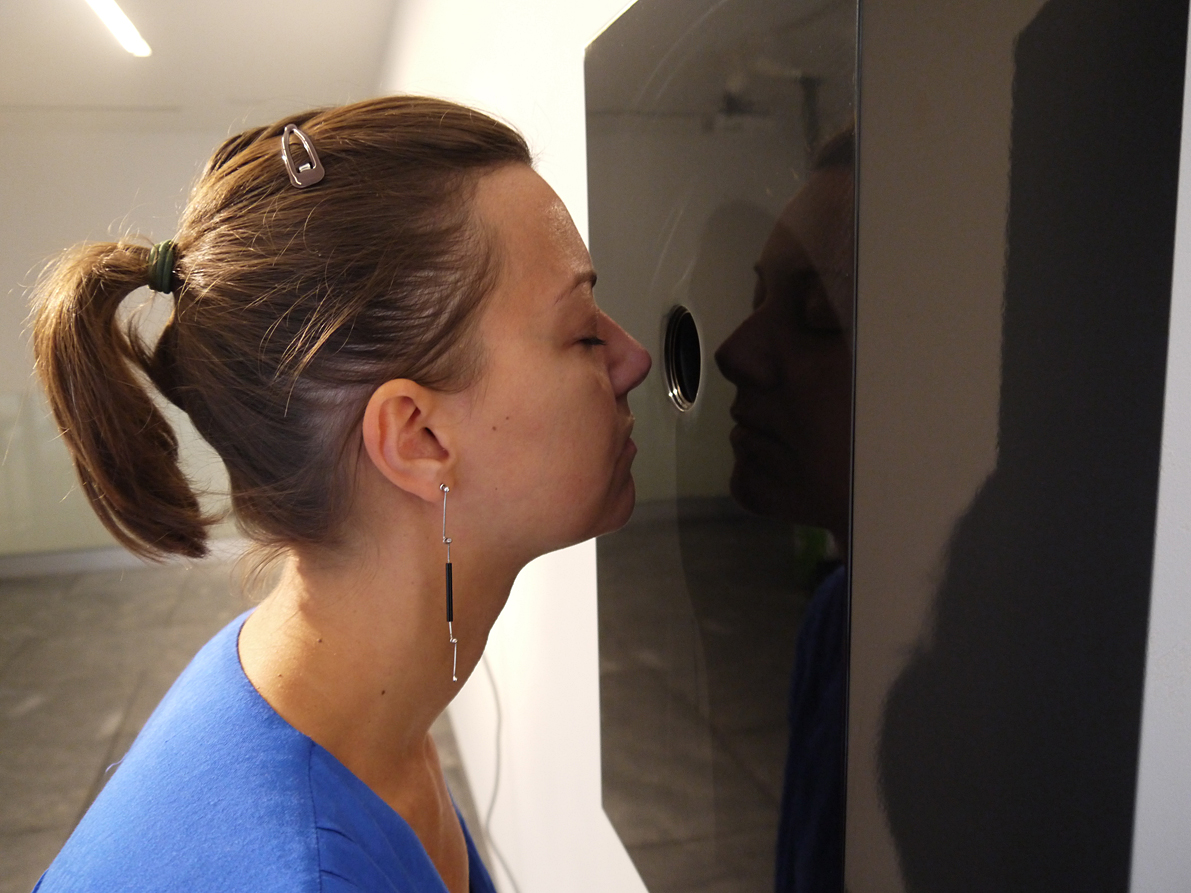
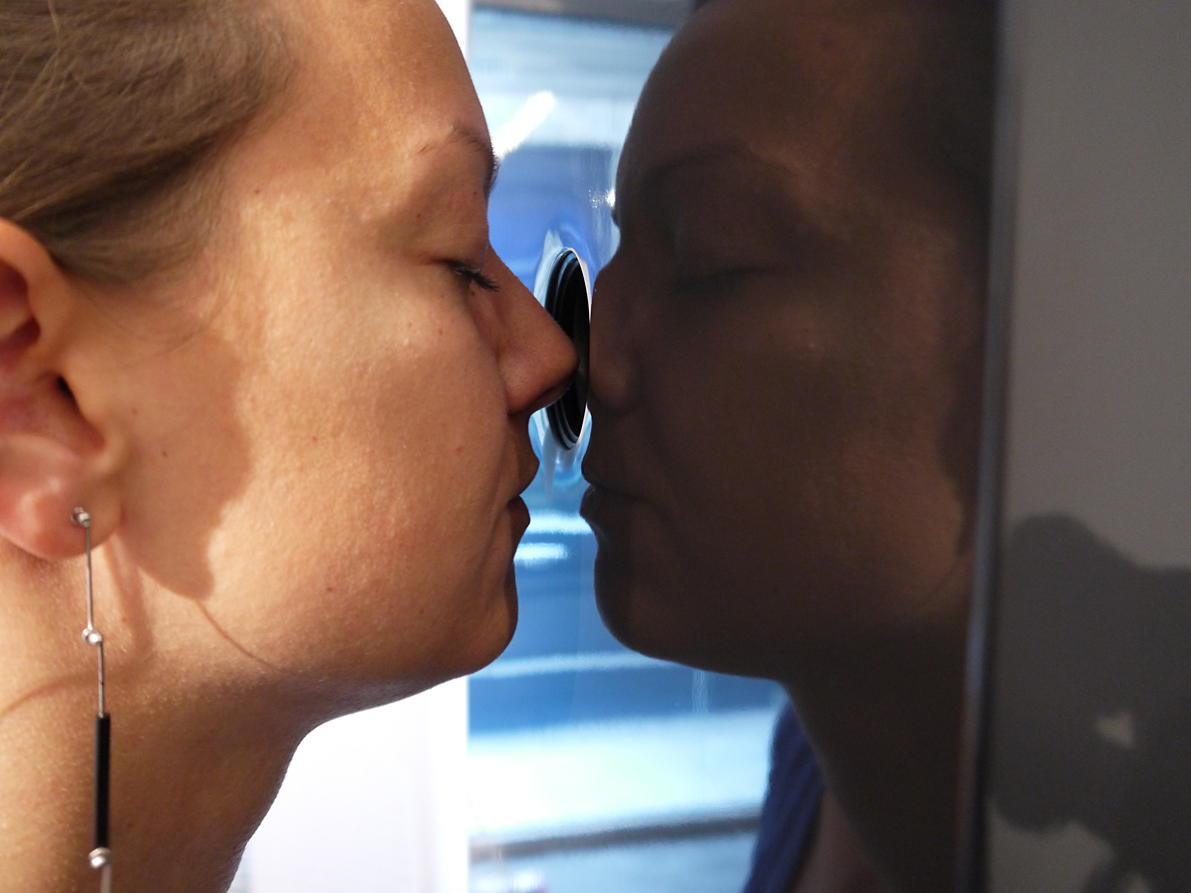

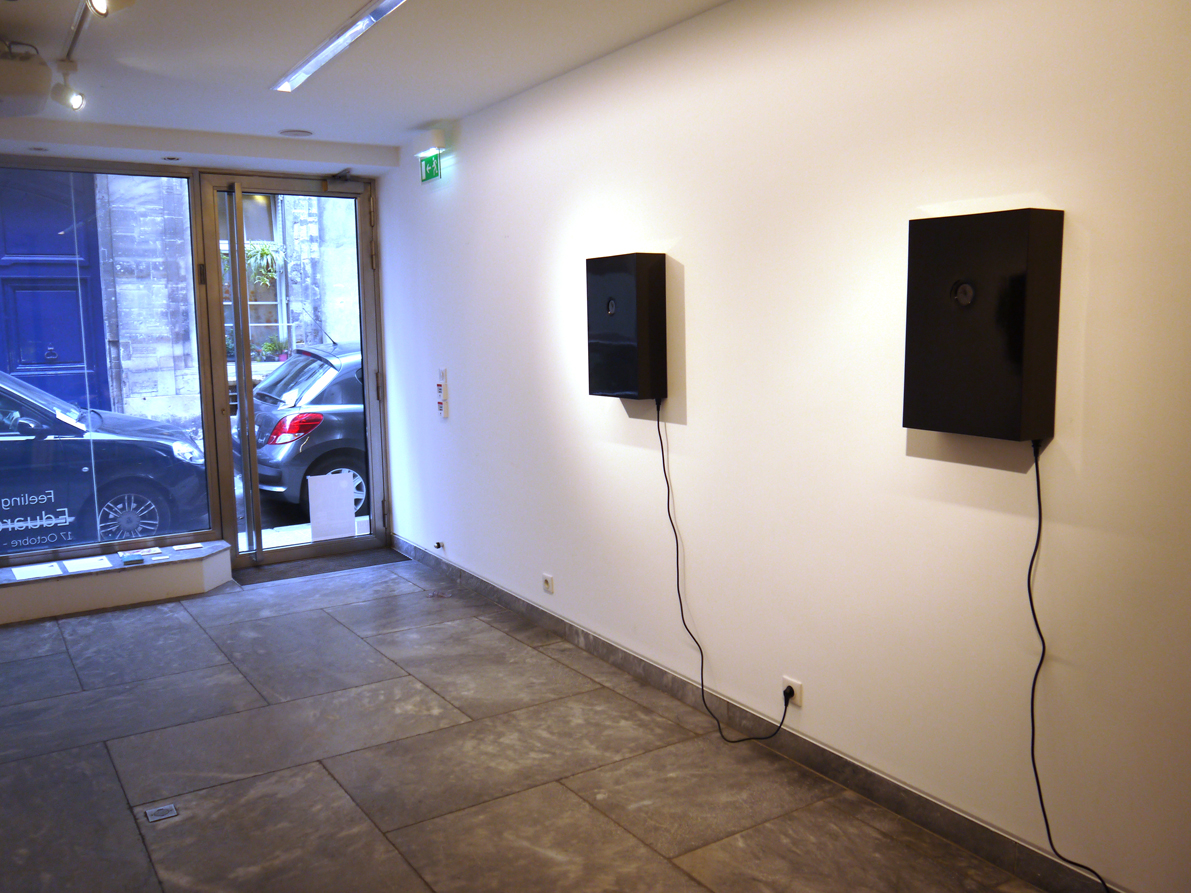
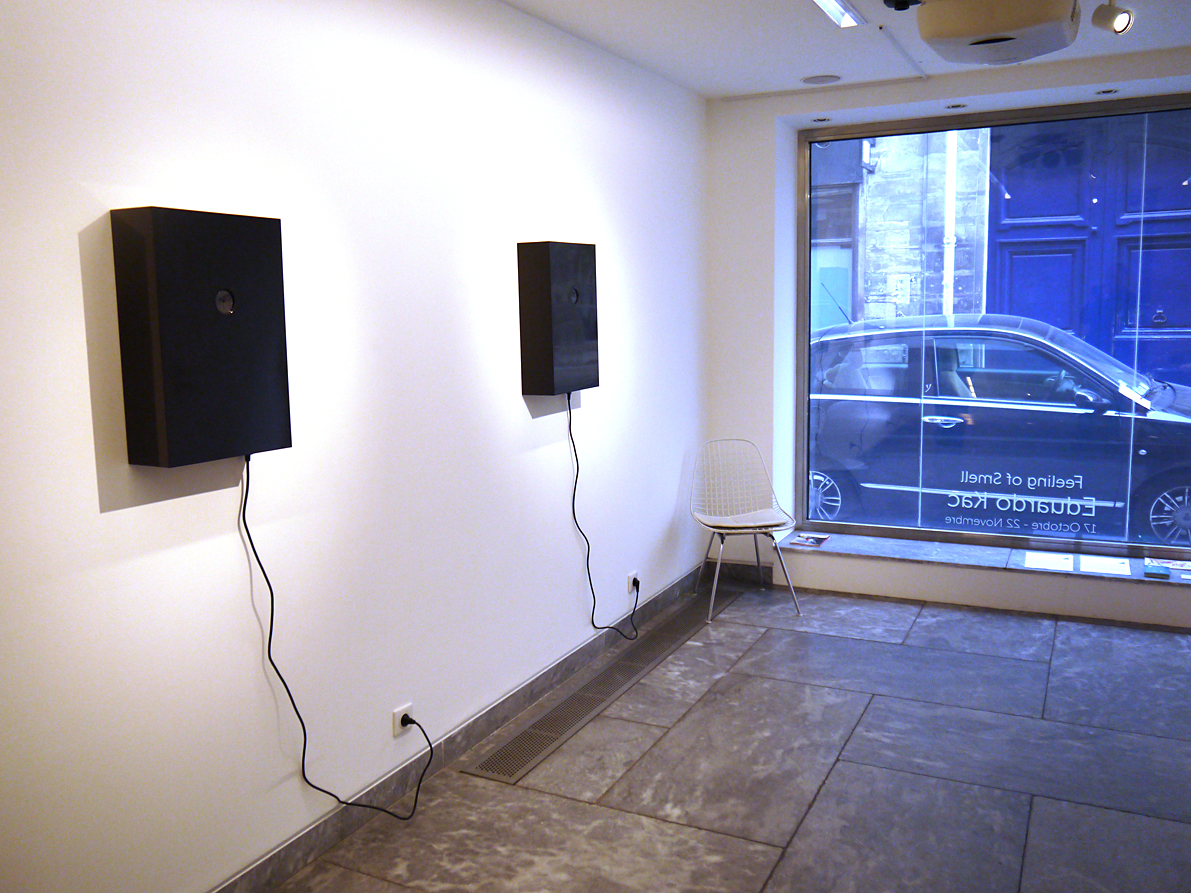
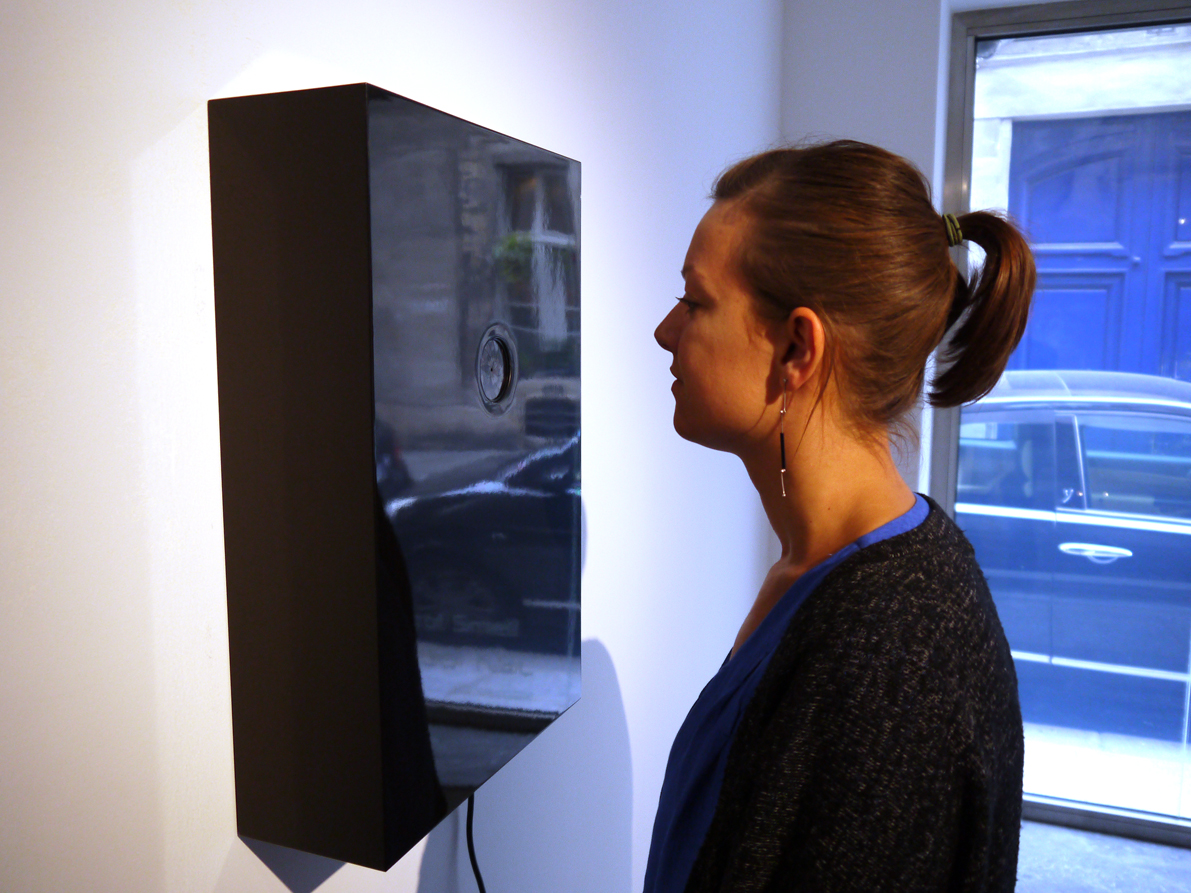
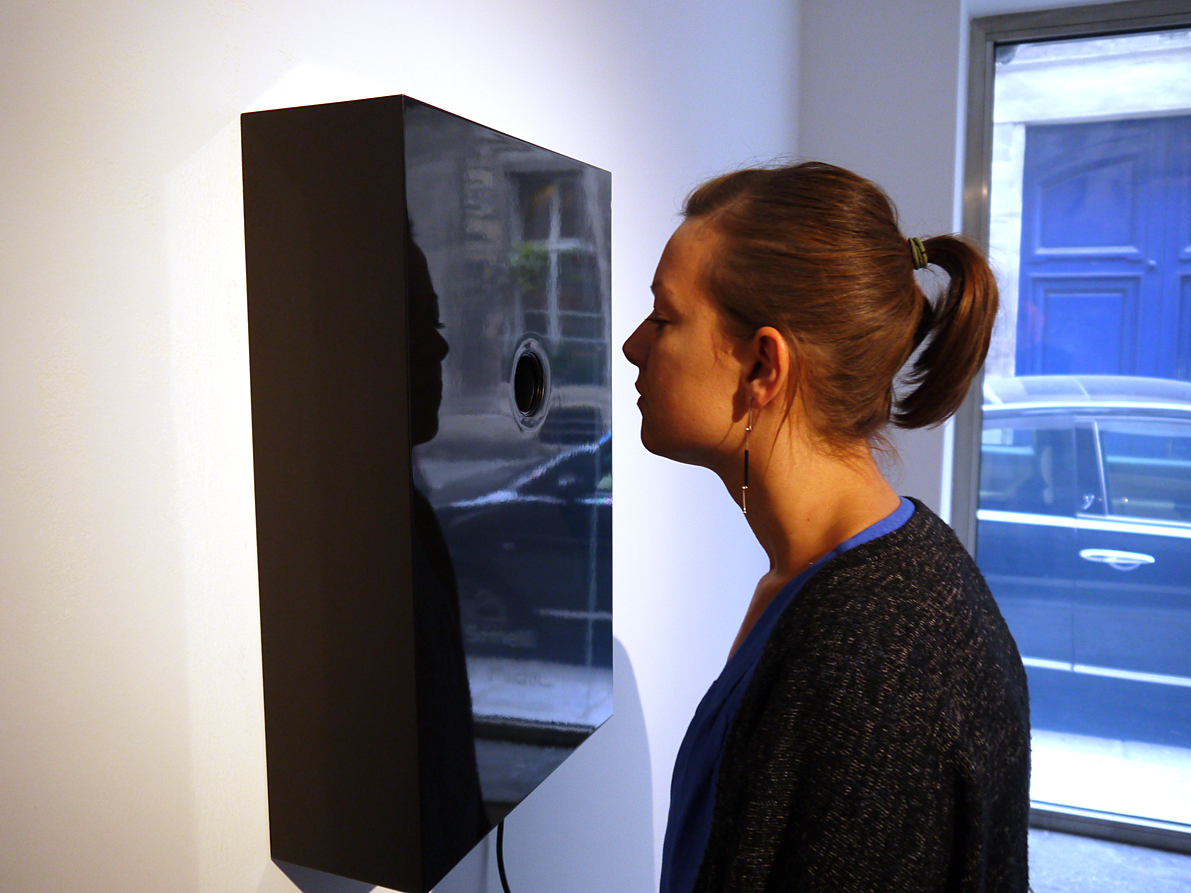
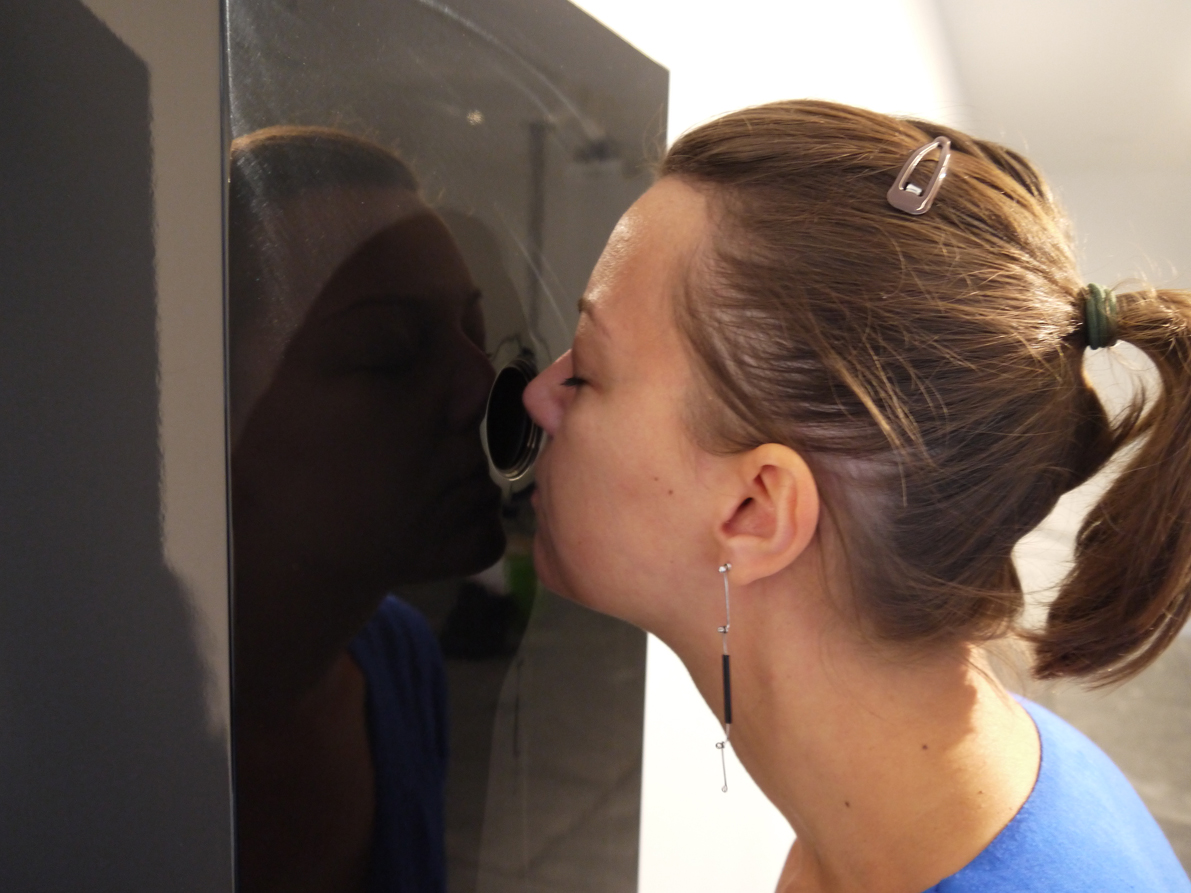
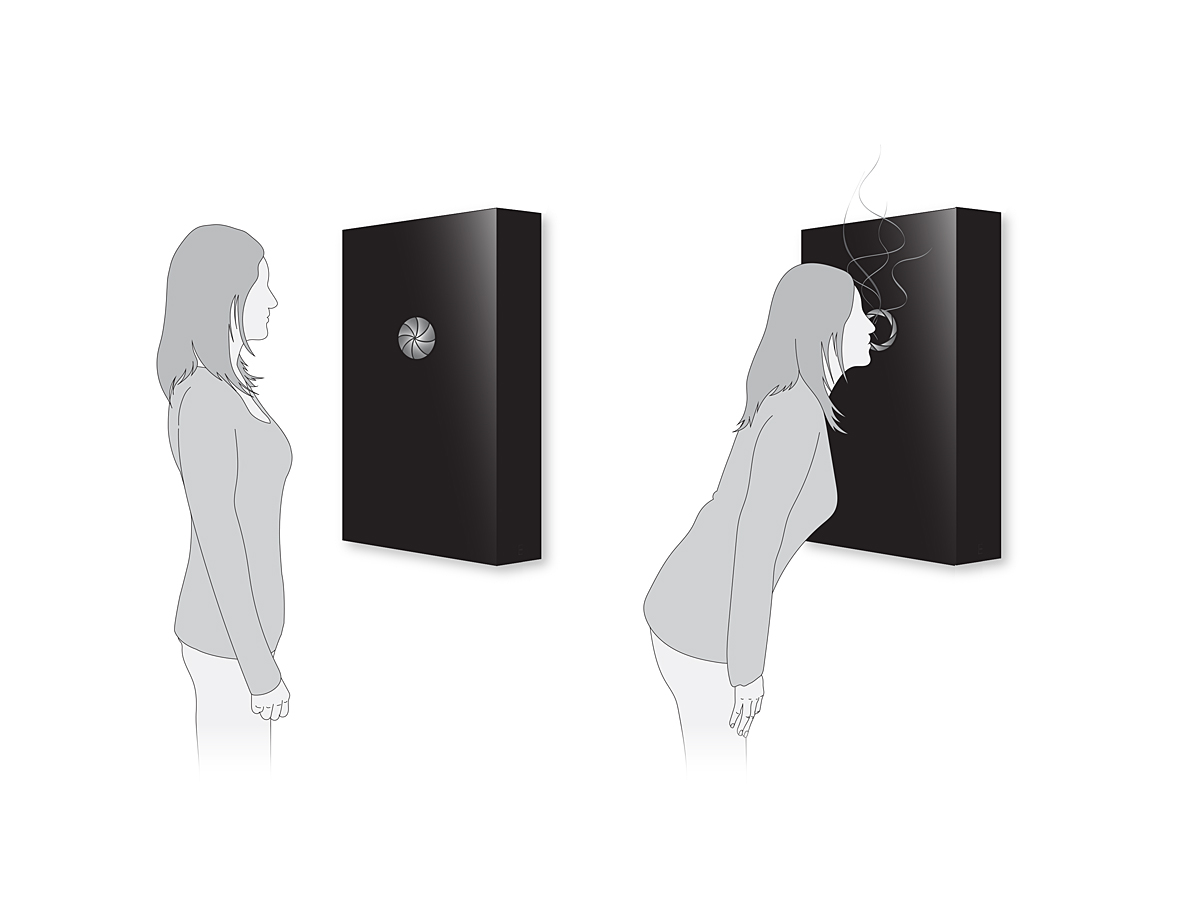
An Osmobox is a work of olfactory art that responds to the presence of the viewer by opening itself and gently releasing an aroma. All Osmoboxes are visually identical but completely distinct in their olfactory identity. This means that the viewer is unable to differentiate them through vision alone and is, therefore, stimulated to explore each artwork primarily through the sense of smell. For this reason, in the context of the Osmobox series, “smeller” shall replace the word “viewer”.
Every scent in the Osmobox series is unique and constitutes the core of the artwork. Upon exploring several works, the smeller is able to detect an olfactory envelope that circumscribes the sensibility that unites all of the different scents. It is the discovery of the unique characteristics of the olfactory compositions emanating from each Osmobox, their subjective mnemonic evocations, and the feeling of being transported elsewhere that constitutes the crux of the Osmobox experience.
This aesthetic experience is fundamentally dissimilar from aesthetic experiences predicated on the other senses and cannot be reduced to them. Due to the volatility of olfactants, which must enter the nasal cavity of the smeller to be detected, the aesthetic sensation is caused by the physical presence of small amounts of the material that constitutes the scent literally inside the human body. This tangible contiguity between the materiality of the artwork and the inner side of the body produces a physical intimacy that is as evocative in its sensuality as it is in its evanescence.
Yet, in spite of the individual potency of each Osmobox to provide distinct forms of olfactory excitation, language constantly reminds us of its inadequacy in evoking or describing the experience. This is so because the relationship between olfaction and language is asymmetrical. While images can be used as sequential words (for example, in a narrative) and words possess indisputable visual qualities (their typography being the most basic level), by definition words have no scent and scents can hardly be subjugated to enunciate a storyline. Art and literary criticism lack the vocabulary to describe, let alone criticize, a work of olfactory art. But this will change in the future.
Olfactory art is not to be confused with perfumery, which has as its primary goal the production of pleasant scents to adorn living bodies, inert objects, or physical spaces. There is a true olfactory art to be developed beyond industrial practice and mimetic approaches (such as the so-called “artist’s perfumes”). Olfactory art shall invent its own aesthetic realm and be understood as a form of contemporary art that explores the limits and possibilities of the most underrepresented of the senses. In so doing, it interrogates the sensorial hierarchy that privileges visuality and, at the same time, invites us to temporarily occupy the subject position of other living creatures, such as dogs, for example, which have in the sense of smell a central means of interaction with the world.
As mentioned above, all Osmoboxes look the same and it is only through individual olfactory scrutiny that each work reveals its internal aromatic secret. I deliberately elected to give all Osmoboxes the same title (with only nominal numbers to differentiate them). My objective with this approach is to further undermine any associations that otherwise would have been established between vision, language and the experience enabled by the Osmoboxes. I invite the smeller to relinquish any attempt to reduce the experience to either words or familiar references and, just like the airborne aromatics, to abandon him or herself to the effluvium that flows with the wind.
Osmobox drawings